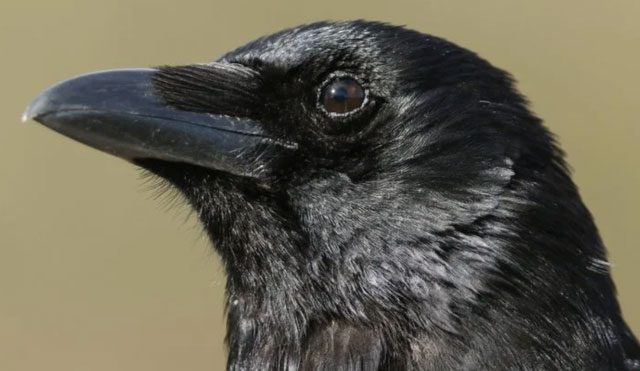Corvids, including crows, are animals known for their advanced cognitive abilities, showcasing remarkable learning and memory skills. Recent studies have demonstrated that crows possess a level of awareness and consciousness about the world that is comparable to that of humans.
Scientists refer to this phenomenon as primary consciousness or awareness. Previously, this trait was only documented in primates, suggesting that we may need to reevaluate our understanding of how consciousness arises, as well as reconsider the brain structures of birds.
“Our research findings open up a new perspective on the evolution of cognition and its biological and neurological limitations,” stated Andreas Nieder, an animal physiologist at the University of Tübingen.

Crows also possess primary consciousness.
Primary consciousness is the most basic form of consciousness as we classify it—an awareness of the world in the present (both immediate and future). Essentially, it relates to the primate cortex, a complex region of the mammalian brain.
However, avian brains have a different structure compared to primate brains and are less layered than mammalian brains. Therefore, even though corvids—birds that include crows and ravens—are extremely intelligent, with cognitive abilities similar to those found in primates, the question remains whether they can transcend boundaries to achieve sophisticated thought.
Nieder and his colleagues designed an experiment to test whether these birds could have subjective experiences, specifically testing this on two carrion crows (Corvus corone).
Initially, the birds were trained to respond to visual stimuli. The crows were connected to a screen displaying lights; upon seeing the light, they had to move their heads to indicate that they had indeed seen something. Most lights were clear and distinguishable, and the crows reliably reported having seen them.
However, some lights were significantly harder to detect—short and dim. For these stimuli, the two crows sometimes reported seeing the signals and other times did not. This represents the realm of subjective sensory experience.
For the experiment, each crow was shown approximately 20,000 signals over dozens of sessions. Meanwhile, electrodes implanted in the crows’ brains recorded their neuronal activity.
When a crow registered a “yes” response to seeing the visual stimuli, neuronal activity was recorded from the moment it perceived the light until it provided a response. When the answer was “no,” that heightened neuronal activity was not observed. This correlation was reliable enough to predict the crows’ responses based on their brain activity.
Nieder commented: “The neurons represent visual input without the expected subjective components, which would react similarly to a visual stimulus of constant intensity. However, our results clearly show that neurons at higher processing levels in the crow’s brain are influenced by subjective experience, or more accurately, they generate subjective experience.”
The results confirm that subjective experiences are not exclusive to primate brains. The complex layering of mammalian brains is not a prerequisite for consciousness. In fact, a second recent study shows that the smoothness of avian brains does not indicate a lack of complexity.
Using 3D polarized light imaging and neural tracing techniques, psychologist Martin Stacho from Ruhr University Bochum in Germany and his colleagues described the anatomical features of the brains of doves and owls. They discovered that the neocortex structure in both bird species resembles that of mammals.
It is possible that similar cognitive capabilities have independently evolved in both birds and mammals, a phenomenon known as convergent evolution. However, it may also be that our brains are more closely related to theirs than the apparent differences might suggest.
“Our findings indicate that it is quite possible an ancient microcircuit existed in a common ancestor that has been preserved evolutionarily and partially transformed in bird and mammal species. The last common ancestor of humans and crows lived about 320 million years ago. Conscious awareness may have originated back then and has been passed down since. In any case, the capacity for subjective experience may be realizable in brains with different structures and independently of the cortex. This suggests that primary consciousness may be more widespread among birds and mammals than we have previously recognized,” the researchers explained.




















































